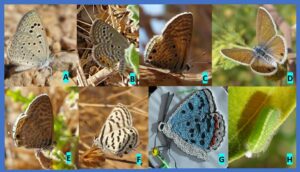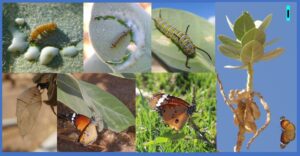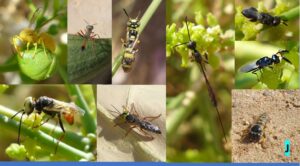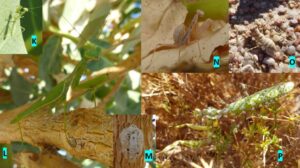Gerrit von der DJN-Ortsgruppe Göttingen war Ende 2018 in Sharm El Sheikh (Ägypten) auf der UN-Biodiversitätskonferenz (CBD COP 14). Neben dem Kennenlernen von und Mitmischen in der Biodiversitäts-Politik hat er sich als DJNer natürlich auch der Pflanzen und Tiere vor Ort gewidmet. In seinem Beitrag schreibt er, warum man nicht erst zum nächsten Nationalpark fahren muss, um die Natur besser kennen zu lernen.
Where can we find biodiversity?
A naturewalk through a Botanical Garden in the Egyptian desert
When you think about biodiversity, what comes to your mind? National parks and protected areas? Then we have a problem.
Why is this perception problematic? We find biodiversity everywhere, from cities to rural areas, protected areas to parks and agricultural fields. If we only think about sanctuaries and protected areas when thinking about places, where we can find biodiversity, we do not do enough to conserve the diversity of life that is out there. Furthermore, we will not be able to observe the wide range of biodiversity that is around us and acknowledge all the benefits we gain from it: There is so much in nature we can experience, and which is worth to be admired!
We can change how we perceive biodiversity when we try to see our public spaces in a different light. The easiest way is to go out in the next public park to look for insects and birds. A public park or a botanical garden is a human-created habitat but at the same time attracts a big number of native animals, which feed on the plants or use the habitats provided. While writing this text, the Global Youth Biodiversity Network is attending the UN-Biodiversity-Conference (CBD COP 14) in Sharm El Sheikh. The next green space is the Peace Park Botanical Garden.
The Peace Park Botanical Garden seems more like a park than a Botanical Garden, when we walked through the entrance gates: Many colorful flowers, but from only a few species, neatly trimmed green lawn, even if the Botanical Garden is located in the desert. But after we walked for a few minutes, we arrived at a part of the garden, which is different. There is no green lawn anymore, but a number of scrubs and trees in shades from brown to green. At the first glance it looks deserted, but at a second look we can recognize that this part of the garden is full of life: It is a mirror of the desert, since native plants are planted here.
While we walk, we stop regularly to look at birds, plants and every little insect. When we pay attention to every small creature, this helps to understand its importance, too. “The beginning of wisdom is to call things by their proper name.” Confucius said. We need knowledge about nature, when we want to make decisions. With every stop we make in the garden, we see more and more animals. There are plants, too, which we haven’t noticed before. In between the planted scrubs there are weeds, which are being visited by insects. While the time passes, our perception changes. At the end of the naturewalk, there were many things we were able to collect: The sweet scent of acacia-flowers, the sound of birdcalls and many pictures of Egyptian plant and animal species – latter both in our memories and on the memory card of our cameras we brought. May the pictures inspire you, to explore the nature in an area near to where you live, too!
(Bilder von Inga Fink, Linnea Hindricks, Bharath Reddy und Gerrit Öhm, Blog-Beitrag von Bharath and Gerrit; Alle Bilder wurden (wenn nicht anders vermerkt) im November 2018 im Peace Park, Sharm El Sheikh, aufgenommen. Die genannten Personen waren als Teil des Global Youth Biodiversity Network (GYBN) auf der CBD COP 14.

A: Dark Grass Blue (Zizeeria karsandra)
B: Grass Jewel (Chilades trochylus)
C: Desert Babul Blue (Azanus ubaldus)
D: Desert Babul Blue (Azanus ubaldus)
E: Zebra Blue (Leptotes pirithous)
F: Mediterranean Tiger Blue (Tarucus rosaceus)
G: Sinai Baton Blue (Pseudophilotes sinaicus) model by the Medicinal Plants Association, St. Catherine at the UN CBDCOP14
H: Caterpillar of a gossamer-winged butterfly (Lycanidae)

I: Life cycle of the Plain Tiger (Danaus chrysippus)

J: Diversity of Egyptian wasps from the Sinai Peninsula

K: Giant African Mantis (Sphodromantis viridis)
L: Mantis nymph
M: Ootheca (Mantis eggs)
N: Mantis nymph
O: Desert Mantis (Eremiaphila sp.), found in Ras Mohammed National Park
P: Egyptian Flower Mantis (Blepharopsis mendica), found in Ras Mohammed National Park
Schlagworte: Ägypten, Biodiversität, englisch, Gesellschaft, Insekten, Natur, Ökologie, Politik



